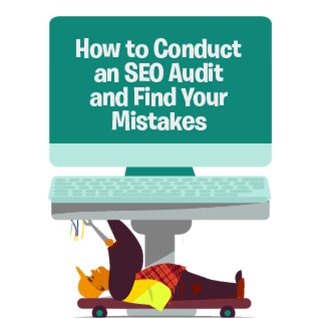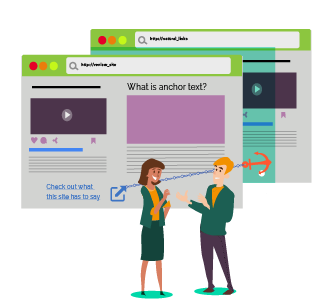Search Engine Optimisation is the most fundamental aspect of digital marketing that makes your website content organically visible on the internet.
However, this process might face errors or mistakes which can hinder your path to success. That’s why you need to do your SEO audit regularly.
Things change very fast in the SEO industry and what is working today may not work in the six months from now.
Google, a leading search engine, makes hundreds of updates to their regular updates or changes or ranking algorithm per year and an optimisation audit will assist you to stay in synch.
It is incredibly compulsory to perform regular SEO audits to ensure that your site is up to date with the latest updates.
Performing an SEO audit of your website is extremely important for numerous reasons. Primarily, you can recognise problems and parts that need enhancement and create an action strategy to correct them.
Secondly, a proper SEO audit will keep your website up to date with the recent changes in the search marketing and on top of the competition.
An SEO audit is the best effective procedure for evaluating the search engine friendliness of a website in many areas.
Whether you’re a small business that is trying to optimise your site for better search ranking and organic reach or an agency doing the same for a client, it can be difficult to know where to begin.
The questions of how in-depth your analysis should go, and which SEO tools will help you with the most useful information, are often confusing everyone.
In this article, we will reveal how to conduct SEO Audit, find your mistakes and how to improve the core areas of your website.
Why Is It Important to conduct SEO Audit?
You can consider an SEO Audit as an assessment of a website, and in this assessment, it is evaluated the sites ability to appear in search engine results pages.
Your task is to check each step on your audit list, looking for any issues that need to be fixed or optimised, to boost your page’s search engine performance and user experience.
Your site might be well-designed and with great content but if search engines are unable to read your website, the pages that you’ve put hard work into may not ever be seen by your audience.
It’s important to do a full SEO Audit because it can help you with:
- Comparing yourself to competitors and use your findings to your advantage.
- Analysing and identifying what changes need to be made (and how to change them).
- Get a broad overview of the SEO efficiency of your site.
- Find your website’s mistakes and fix them.
- Set some expectations for your website’s future.
Performing your SEO Audit of Your Website In Few Easy Steps
Now that you’ve understood that an SEO audit is a must for every website, let’s see how you can perform a thorough check.
Observe and Crawl
First thing first, before you jump to conducting a complete audit you need to know what exactly you’re dealing with. First and most important preparation step is to crawl the entire website content.
This is an essential step in understanding how your internal linking networks are working and other components of your crawl framework. For crawling, you can use Screaming Frog’s SEO Spider to perform site crawl.
By default, a recommendation is to disable cookies, JavaScript and CSS when you conduct a website crawl.
By disabling these three, you will be able to reveal crawling issues that correlate to preferences you make on the page.
The site crawl gives us a ton of information, but to take this audit to the next level you need to consult the search engines.
Here you can use the Google Search Console (previously known as Google Webmaster Tool) that will provide data directly from the source, and that will help in discovering optimisation opportunities.
Now that you considered the search engines, you also need to get information from the site’s visitors. The easiest way to get that data is through the site’s analytics. And the best way to do this is through your Google Analytics, which collects all of your site’s traffic patterns.
At this point, we are not yet finished with data rendering, but we have enough to begin our SEO analysis.
Technical Analysis
The first thing you want to check is whether your site is working correctly and if your users and search engines can reach it.
This can be checked with technical analysis – and you’ll want to look at accessibility and indexability.
1. Accessibility
It’s important that search engines have access to your site to crawl, index and deliver your content to searchers. Search engines need to crawl easily over your site.
But not only search engines, but accessibility is also crucial for users too. Because, if your potential visitors are unable to see your pages, there is no point in creating new content.
Check your robots.txt and robot’s meta tags, as these two can restrict access to certain parts of your website. Next thing to check is XML sitemaps. XML sitemaps create a map for Google crawlers.
Don’t forget that your XML sitemap needs to be formatted and submitted in a proper way to webmaster tools account before it can be accessed.
Additionally, a significant aspect for your accessibility is overall website architecture.
Make sure to reduce the number of clicks that are needed by visitors to move from homepage to destination page — this will make things easier for crawlers (and users). Moreover, the issue of redirects must also be adequately addressed.
Okay, now you settled things with Google. Now, go to users and their experience with your website. As we know, users will run away from your website if they cannot browse freely and if the site structure is terrible.
Keeping that in mind, you’ll want to work on improving the speed and structure of your website as that may cause negative user experience.
Same goes for mobile devices. As the number of people are using mobile devices while searching online grows, your website needs to be mobile friendly so that visitors can surf your site using their smartphones.
2. Indexability
If you performed everything correctly, search engines would find your page, and you can head on to the indexability.
Indexability is closely tied with accessibility, but indexability is related to how those pages are shown and indexed within Google after accessing them.
So why some pages can’t be accessed and indexed by search crawls?
There could be a few reasons, such as it could be that your site is on the bad side of Google, maybe as a result of a penalty.
The first thing you should know is that Google’s search bots work differently from site to site.
For instance, a well-known company with more content have a higher chance of being indexed in no time as opposed to a small startup that doesn’t post regularly.
So, no need to panic just yet. It can be that your issues are also connected to the accessibility of your web page (site architecture and other stuff that we mentioned).
However, if you discover that you indeed got penalised, it’s in your best interest to admit your mistake and of course, make necessary changes — any form of denial will only deepen the issue and make things worse.
On-page SEO Audit
At this moment, you can be pretty sure that your site is working great – both with users and crawlers. Now it’s the right time to focus on on-page analysis. On – page analysis has its attention to content and single page issues.
When it comes to content, make sure you write and publish content that is relevant and valuable for your readers and the general idea of the site.
Two large-scale mistakes that occur is keyword cannibalisation and duplicate content. Duplicate content can be confusing to Google.
Site crawls get confused when you publish articles with similar content, and this can lead to indexability issues.
As for keyword cannibalisation, this story is well known. It happens when your site has multiple pages that target the same keyword.
When multiple pages are targeting a keyword, it creates confusion for the search engines, and more importantly, it creates confusion for visitors.
Single page issues refer to the way each page is written and structured. This means you need to focus on the construction of the content and on your end user.
Because, without an original and relatable copy, you shouldn’t even try optimising your website. The content should be unique, valuable and easy-readable.
Make sure you create longer articles because, in today’s SEO world, you require at least.
500 words. Also, optimise your images, as this is also an essential part of your page ranking.
Furthermore, after setting the record straight with your content, think about your URL.
Your URL needs to be nice & clean and to explain content briefly and adequately, and of course, it must contain your main keyword.
It is somewhat logical that your title should also have the main keyword in it and to be brief.
Don’t forget on your meta-description, as it will positively impact conversion rates. Last, but not least – check your internal linking structure!
Linking your pages together is a useful process to both search engines and users. Also, make sure there aren’t any broken links as they are bad for user experience and SEO as well.
Off-page SEO Audit
You’ve done the technical part and on-page audit, what next? Shit the focus to off-page analysis. You want to start by investigation how popular is your domain is on the web.
In a way, off-page ranking factors are the result of your previous work.
Off-page SEO Audit basically shows how popular your website is, whether people are linking to it and from which sites and is it trustworthy.
Start your off-site analysis with a trust factor. Trust factor indicates that the Google search engine trusts a website and that has positive SEO practices. (You don’t want to make SEO mistakes).
It is necessary to remain a trusted source and play by Google’s rules. Next, you need to make sure that your content is popular and shared among readers and is known as SEO backlinks.
The Google algorithm considers backlinking as ‘votes of trust,’ and websites with good quality backlinks tend to rank higher in Google results.
However, you should not go out and build link like crazy and from untrusted domains.
The best way to do backlinking is by putting your efforts into building good websites, and good content and links will flow in naturally.
Analysis and Keyword Research
Are you done with all technical and internal issues? If so, you are ready for the final step in SEO audit is competitive and keyword analysis.
When you start with keyword research, it will lead you to your competition. These are two sides of the same coin.
Understanding what keywords are search engines identifying with your site, the position and the quality compared to your competitors is another vital element of SEO audit.
Your ideal keyword should be between difficulty and traffic. In essence, it should be medium difficulty and medium volume in searches.
Still, it’s in your best interest to find high-performing keywords that are tailored to your target audience if you’re looking to beat the competition and boost traffic.
To sum it up, it’s highly recommended that you consider several different options before selecting keywords for his client. The best tool for searching your options is Google Keyword Planner, as a part of Google Ads platform.
In Conclusion
With all of this said and done, you can agree that doing SEO Audit and removing any mistakes is essential for the long-term success of your website.
When you run an SEO Audit, you’ll get to know what’s wrong with your site and work on properly resolving all the issues.
Do your SEO Audit right, and you’ll see a big difference in the overall performance and ranking of your website.
We explained all the elements for conducting a complete SEO audit. Stick to our plan, remove any mistakes and head to successful organic reach domination.







